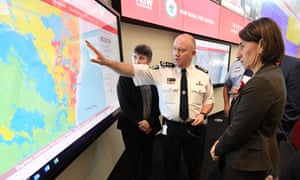For the first time since new fire ratings were introduced in 2009, the highest fire danger has been forecast for Sydney
Catastrophic fire danger has been forecast for the greater Sydney,
greater Hunter and Illawarra/Shoalhaven regions on Tuesday 12 November.
This includes the central coast and the Blue Mountains.
It’s the first time since the new fire ratings were introduced in 2009 that catastrophic conditions have been forecast for Sydney.
Here’s what it means.
It’s the first time since the new fire ratings were introduced in 2009 that catastrophic conditions have been forecast for Sydney.
Here’s what it means.
What is catastrophic fire danger?
Catastrophic is the highest fire danger rating.High temperatures, strong winds and low humidity are forecast, making conditions dangerous.
If a fire starts during catastrophic conditions, lives and homes will be at risk.
Fire danger ratings are based on the latest forecasts from the Bureau of Meteorology.
When calculating fire danger, authorities look at the temperature, wind speeds, humidity and the “drought factor”, that is, measures of how much moisture is in the ground already.
Temperatures in the Sydney and Hunter regions on Tuesday are forecast to reach the high 30s. Winds from the north-west are expected to be particularly dry, particularly hot and very gusty. If fire breaks out, it can spread out of control quickly.
The NSW Rural Fire Service is also forecasting extreme fire conditions for the north coast, central ranges, northern slopes and north-western regions. Current forecasts are for severe fire danger for the far north coast, New England, the far south coast, the southern ranges, and the lower central west plains.
A statewide total fire ban has been declared for all areas of NSW for all of Monday and Tuesday.
What should I do in catastrophic fire conditions?
In catastrophic conditions, the message from the Rural Fire Service is simple: For your survival, leaving early is the only option.They give the following advice:
- Leave bushfire-prone areas the night before or early in the day – do not just wait and see what happens.
- Make a decision about when you will leave, where you will go, how you will get there and when you will return.
- Homes are not designed to withstand fires in catastrophic conditions so you should leave early.
- Avoid bushfire-prone areas. A safer area may be a large town or city, shopping centres or facilities well away from bushland areas.
- Schools in identified high-risk areas will be closed. Schools will notify affected students. Start making arrangements now.
- If you are unable to leave, identify a safe location which may be nearby. This may include a Neighbourhood Safer Place.
The web page also includes advice on what people in areas where extreme and severe fire danger is forecast should do.

No comments:
Post a Comment